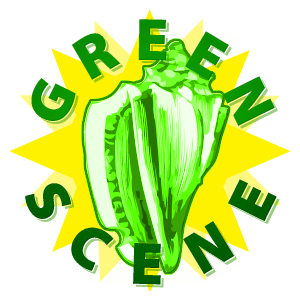Bill Keogh: Steward of the Lower Keys’ Natural World
Naturalist, eco-guide, photographer-writer and paddling guidebook author Bill Keogh, a 44-year resident of Big Pine Key, operates Big Pine Kayak Adventures.
He provides kayak and low-impact motorboat excursions and private motorboat trips to the Lower Florida Keys’ remote wilderness of the National Key Deer Refuge and Great White Heron National Wildlife Refuge.
He’s also a member of the Florida Keys Wildlife Society, supporting the Florida Keys National Wildlife Refuges, and has led full moon kayak tours as fundraising events for more than 20 years.
His most serene and connected moments, Keogh said, occur when he’s drifting in a kayak over rich seagrass meadows during a full moon with a falling tide.
“This adventure also includes a ball-of-fire sunset in the west and an alabaster moonrise to the east,” he added.
Kayak enthusiasts must meander through Big Pine Key to find Keogh and his nearly 70 kayaks, located adjacent to the tucked-away Old Wooden Bridge Fishing Camp. The rustic camp has 13 cottage and 10 houseboat overnight rentals.
About 2,500 adventure-seekers, including many repeat participants, experience Keogh’s tours each year. He can accommodate groups of up to 40 to 50 and is currently updating his fleet with 36 new kayaks. Three daily trips — mangrove tunnel, custom motorized charters to backcountry sandbars and sunset-moonlight — are offered.
Keogh is the author of “The Florida Keys Paddling Guide,” first launched 20 years ago. He also provided images for a Florida Keys guidebook produced by National Geographic and his work has been widely published in the New York Times, Washington Post, Los Angeles Times and magazines such as Scuba Diving, Wooden Boat, Backpacker and Southern Living. In addition, he’s thinking about possibly creating a photography retrospective of how the Keys have evolved during the last 45 years.
An original board member of the Conch Republic Marine Army, Keogh donates time and kayaks for the organization’s marine cleanup events. He has earned a Conservation Colleague Award from The Nature Conservancy for exemplary photographic contributions.
The vigorous Keogh enjoys frequent travel to Central America and the Caribbean, and takes a personal drive trip to the Northeast each fall to visit his mother and old friends.
At home in the Keys he leads several eco-tour adventures daily, working an average of four days each week, and has no plans to slow down.
“I’m not going to change a thing,” he said. “I’m already doing what I love.”
Keys Traveler: When did you first come to the Florida Keys and why?
Bill Keogh: I left the snow-covered mountains of my college town in Unity, Maine, to embark on a photography internship at Seacamp, the marine science educational facility on Big Pine Key, in 1980.
KT: What aspects of the Keys environment or way of life matter most to you?
BK: I have traveled the world on photographic assignments that focused on ecotourism, pristine environments and outdoor adventure. When I returned home to my Florida Keys, I was always so content, inspired and thrilled to have these same things right in my backyard.
KT: Who or what inspired you to become passionate about respecting and protecting the Keys’ natural world?
BK: A decade-long involvement with Newfound Harbor Marine Institute/Seacamp as staff photographer and science educator. This position gave me such a deep understanding of the Keys’ unique ecosystems.
KT: How does that passion influence your work or profession?
BK: As author, photographer and backcountry eco-guide, I use these skills to educate and connect visitors and locals to our unique backcountry wilderness and its inhabitants.
KT: What are some of the ways, personally or through your work, that you connect with and/or help protect the local environment and unique lifestyle?
BK: I volunteer and have worked pro-bono for just about every Keys environmental group over the years as a photographer or kayak tour operator.
KT: What keeps you energized, challenged and focused on your path?
BK: Being out in our pristine backcountry and sharing unique wildlife experiences with people from around the world keeps me excited about my path in life. When fellow adventurers return from a trip with me and tell me, “This was the highlight of our Keys vacation experience,” I know we are headed in the right direction.
KT: What do you hope your positive environmental actions will accomplish?
BK: To instill in all a reason to tread lightly on this planet, to know your impact with every step and breath. This is the type of connection inspiring others to preserve and protect ecosystems the world over.
KT: What message do you want your actions and example to communicate to people you encounter?
BK: We can work together and create more success stories for our natural world — as we did with the Key deer, once on the brink of extinction. We pushed forward with a plan and kept the environment and the species intact and thriving.
KT: What’s your favorite natural or eco-friendly activity in the Keys?
BK: The monthly moonrise that coincides with a sunset, while completely surrounded by shallow salty seas.
Keogh provides kayak and private boat trips to the remote wilderness of the National Key Deer Refuge and Great White Heron National Wildlife Refuge. Photos courtesy of Bill Keogh.
Full moon paddles typically include a ball-of-fire sunset in the west and an alabaster moonrise to the east.
Keogh's experience as a science educator and professional photographer gives him a deep understanding of the Keys' unique ecosystems.
Keogh says that being out in the pristine backcountry and sharing unique wildlife experiences with people from around the world keeps him excited about his path in life.






